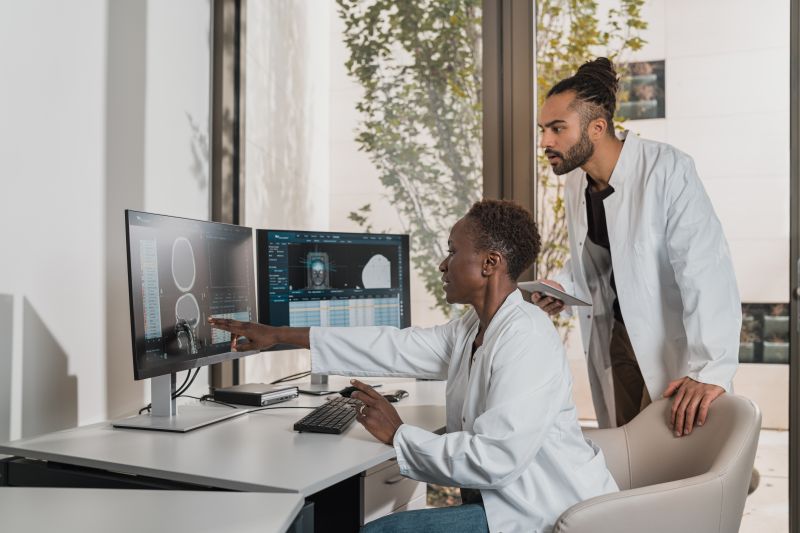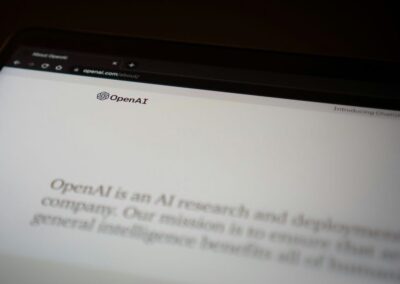By Focusing on Value, We Can Maximize the Benefits of AI in Healthcare
Will the adoption of artificial intelligence in the workplace increase human jobs or decrease human jobs? And how do we adapt? How can we take advantage of this “revolution” and maximize the benefits of AI to add value to healthcare?
AI and the Workforce
In the past few years, there have been several predictions about the effect that artificial intelligence will have on the workforce, some of them positive and some negative. For example, on the positive side, a study by the World Economic Forum in 2020 estimated that 97 million new jobs will emerge world-wide and 85 million could be eliminated, resulting in a net addition of 12 million positions by 2025.
Other studies have identified jobs that potentially could be at risk, such as customer service agents, accountants, research analysts, and even teachers! Other jobs could result in increased demand, the majority of those focusing around the development and maintenance of AI such as trainers, auditors, machine managers, etc. Understandably, employees and their managers are scurrying left and right wondering whether they will be winners or losers.
In healthcare, where critical staff shortages already exist, one wonders whether the incorporation of AI may be a lifesaver (literally), with enormous potential to provide benefits that improve the delivery of healthcare.
History Repeats Itself
There is no doubt that artificial intelligence will result in significant and unpredictable changes in healthcare and in our daily lives, but what we will be experiencing has occurred before with the introduction of many new inventions or technologies. There have been multiple inventions over the years that profoundly altered the course of human history, including the wheel, the iron age, the printing press, and the internal combustion engine, just to name a few.
Each invention made a substantial impact. Jobs were created and jobs were made obsolete. There were winners, and there were losers, but one common thread is that the new normal prevailed and the world had to adjust. Fortunately, the majority of adjustments were very positive—sometimes unexpectedly so.
An illustrative example is the impact of ATMs on bank tellers. When the banking industry first introduced ATMs en masse around the year 2000, many worried that human bank tellers would no longer be needed. In fact, according to a study of the World Economic Forum in 2020, this was initially the case. In the first few years after the introduction of ATMs the number of tellers per bank branch fell from 21 to 13, a 40% drop, largely because of the increased efficiency of the ATMs. As predicted, customers took advantage of this innovative technology and hardly ever ventured inside a bank to do business. People did not even have to get out of their automobiles to do their transactions.
But there was an unseen and fortunate consequence: by being less expensive than their human counterparts, ATMs reduced total operating costs and made it cheaper for banks to open new branches. As a result, the number of branches increased by over 40%, with the net effect of an INCREASED need for tellers.
Simultaneously, the role of the bank teller expanded from historical cashiers to include getting involved in financial transactions and customer service. What was initially thought to be a decreased need in the number of tellers turned out to be an opportunity.
The innovative technology catalyzed greater efficiency for the industry, and the restructuring of job responsibilities offered an additional opportunity to increase the VALUE for all.
Maximizing the Benefits of AI in Healthcare
We should be able to achieve a similar result in healthcare. This is how I believe we should look at the impact of AI on healthcare, considering both the benefits and drawbacks.
Rather than just look at a “tally sheet” of winners and losers, we must now critically examine how we retool and re-engineer the industry to take full advantage of the emerging technology of artificial intelligence with the goal of increasing VALUE.
As healthcare leaders, we must look at every component of the healthcare workforce, starting with our providers, and examine the process of retooling and re-engineering. We must ask some critical questions using our well-established quality improvement approach:
- What is the ultimate goal of the existing workflow?
- How can artificial intelligence make this process better or more efficient?
- How do we restructure and enhance, add value to the existing position?
- How do we better improve the AI-human interface to maximize the strengths of both?
- How do we help humans thrive in this new world?
- What new opportunities now exist as we work together with artificial intelligence?
- What are the outcomes we must track to document true improvement?
No one doubts that artificial intelligence will create a new normal and that there will be huge opportunities in healthcare. But in addition to the obvious technological advantages, this new “revolution” now presents an opportunity to revisit and enhance the processes that we are currently following in concert with the emerging technologies and capabilities brought by artificial intelligence.
Artificial intelligence is here to stay. It will continue to evolve at an accelerating pace, and we must proactively take a stand to work together toward the common goals of improving healthcare outcomes and efficiencies.
Rather than simply look at who will be winners and who will be losers, let us rally around the opportunity this emerging technology presents to maximize the benefits of AI in healthcare. Let us ALL be winners!
If you’d like to learn more about how your organization will be impacted by AI—including insights on how to best take advantage of this emergent technology—reach out to book me for a presentation.
As usual, I appreciate your input and thoughts.




